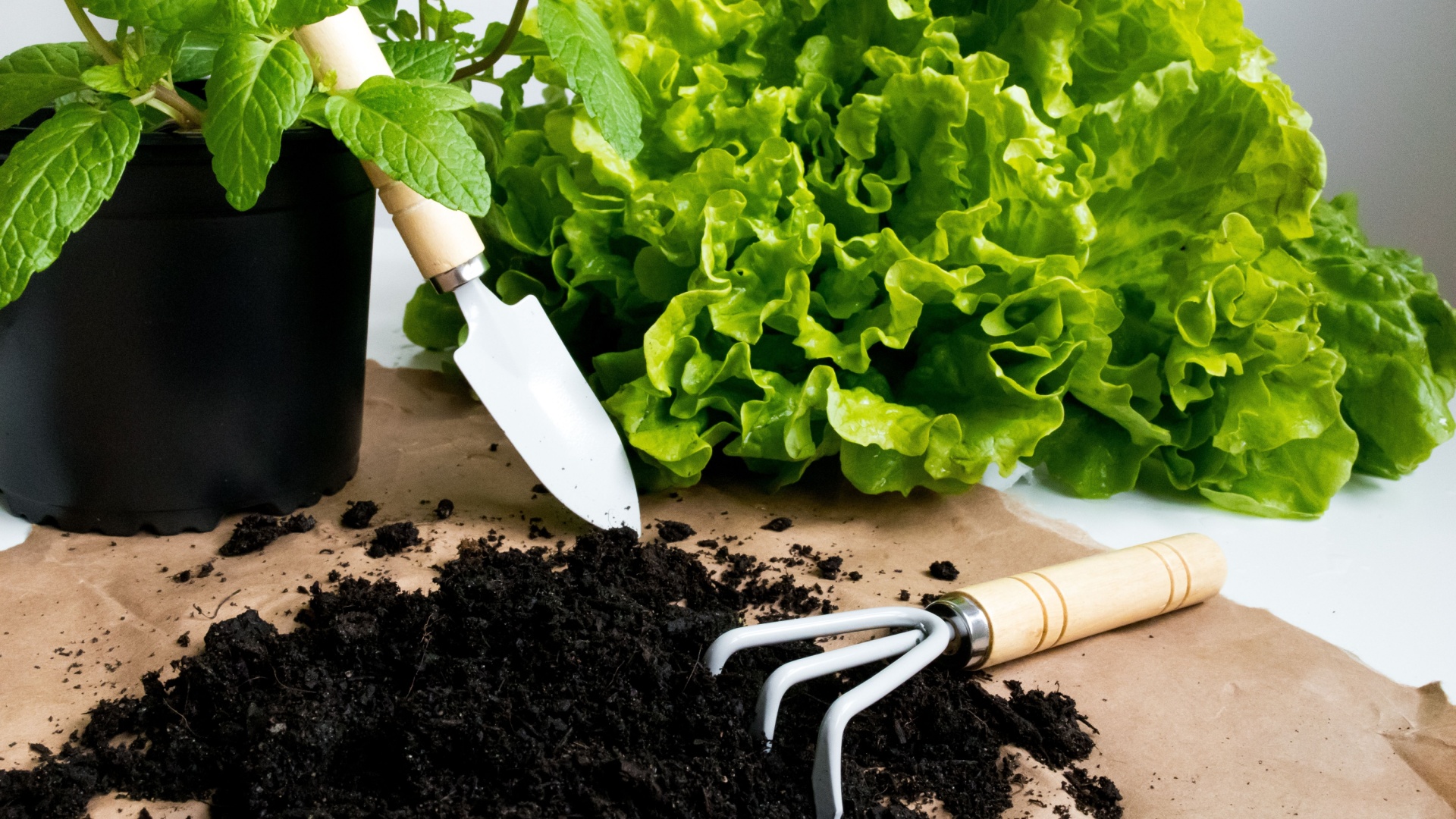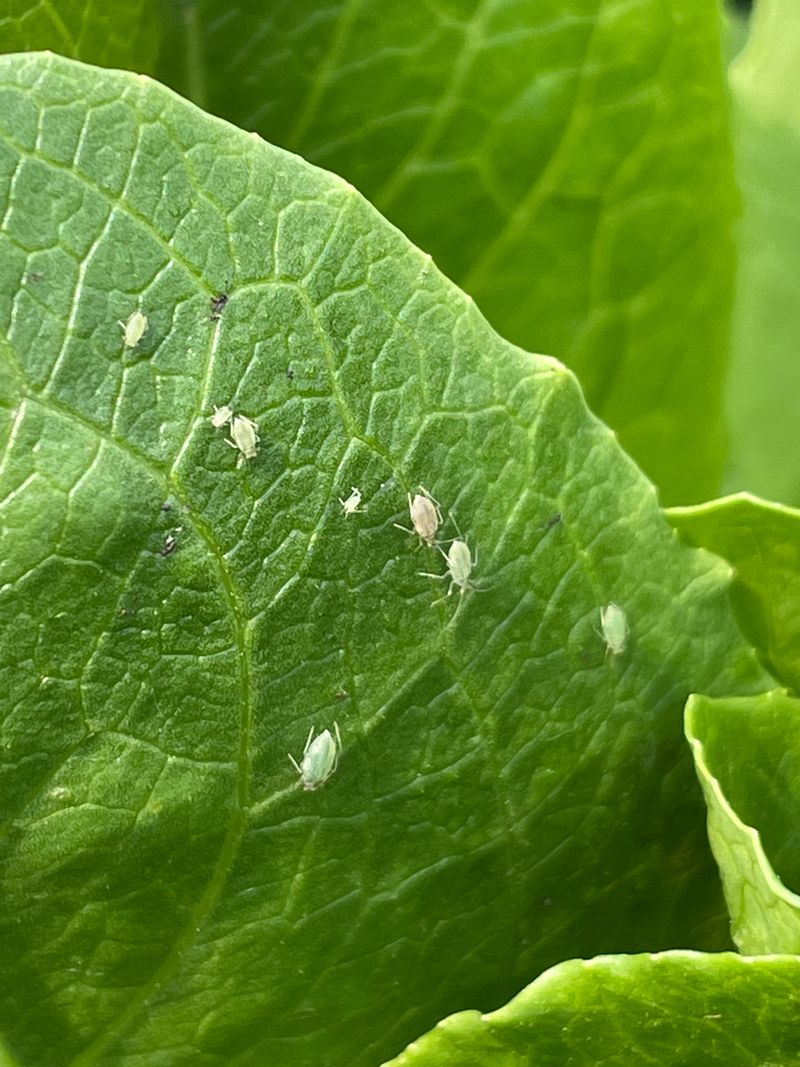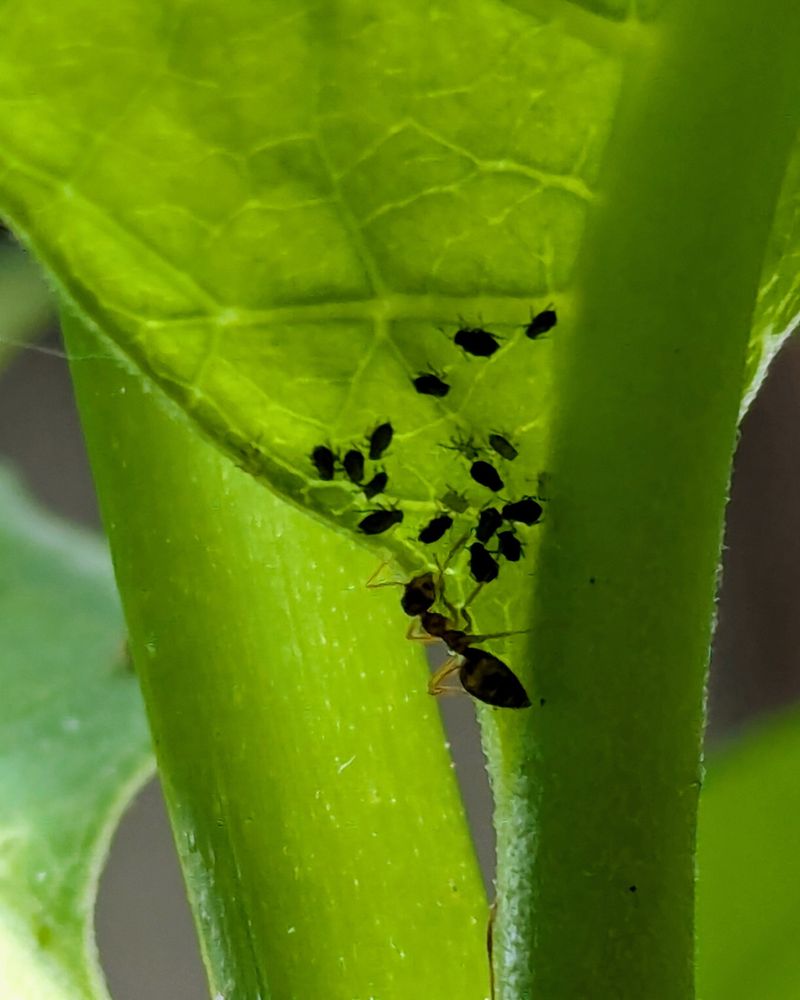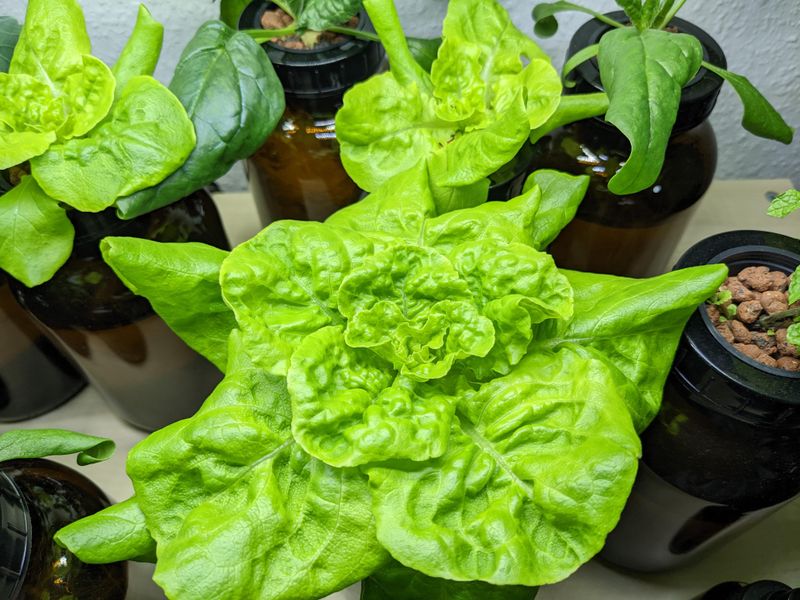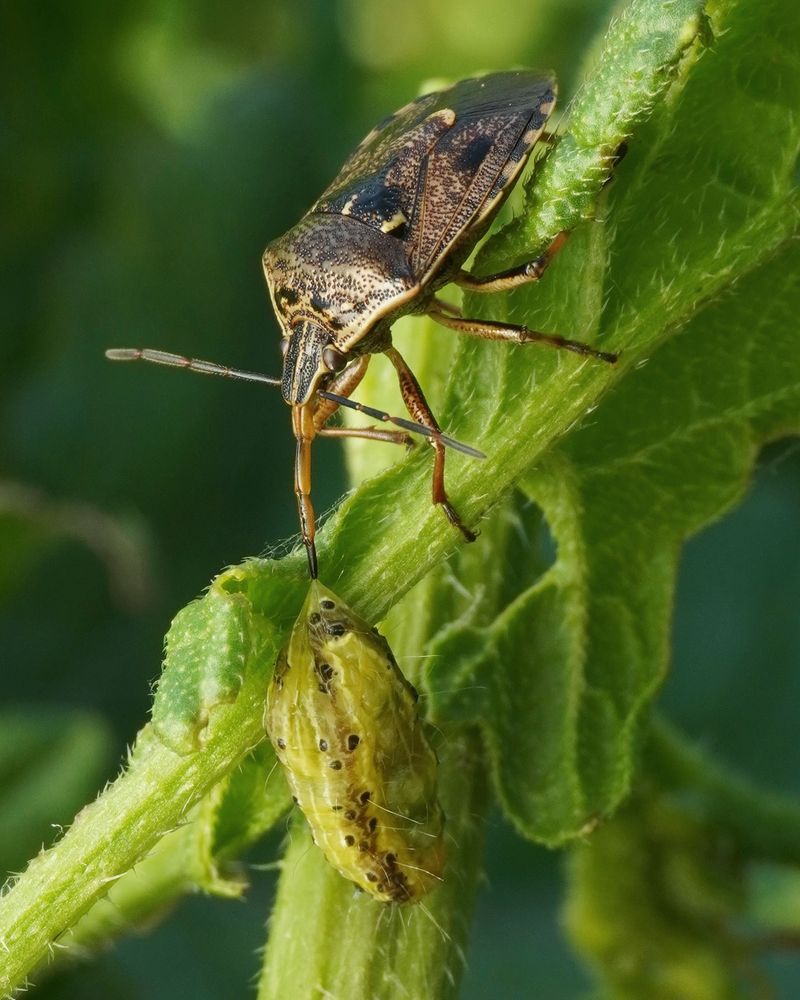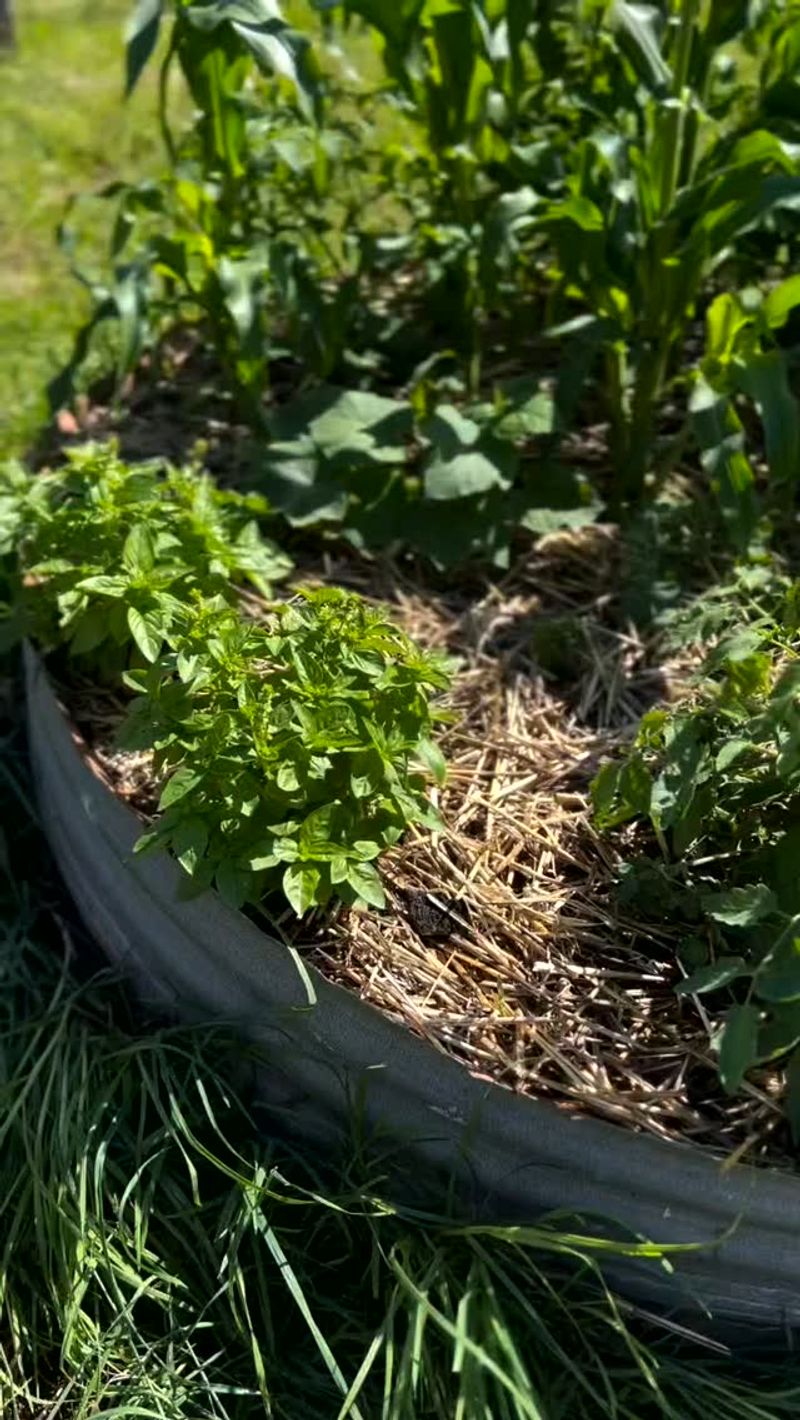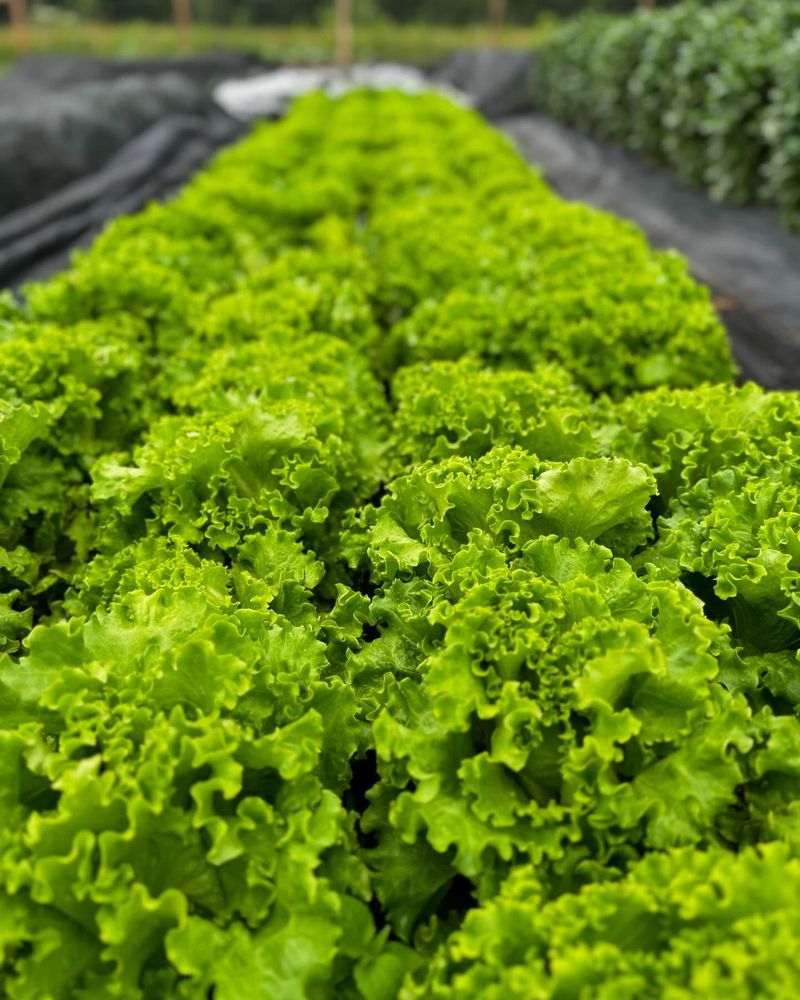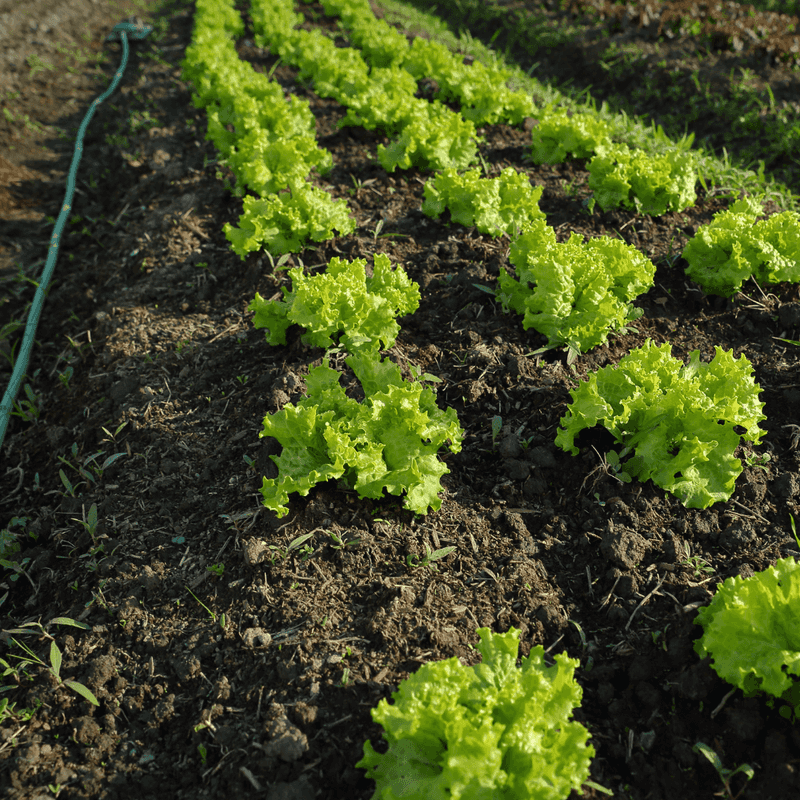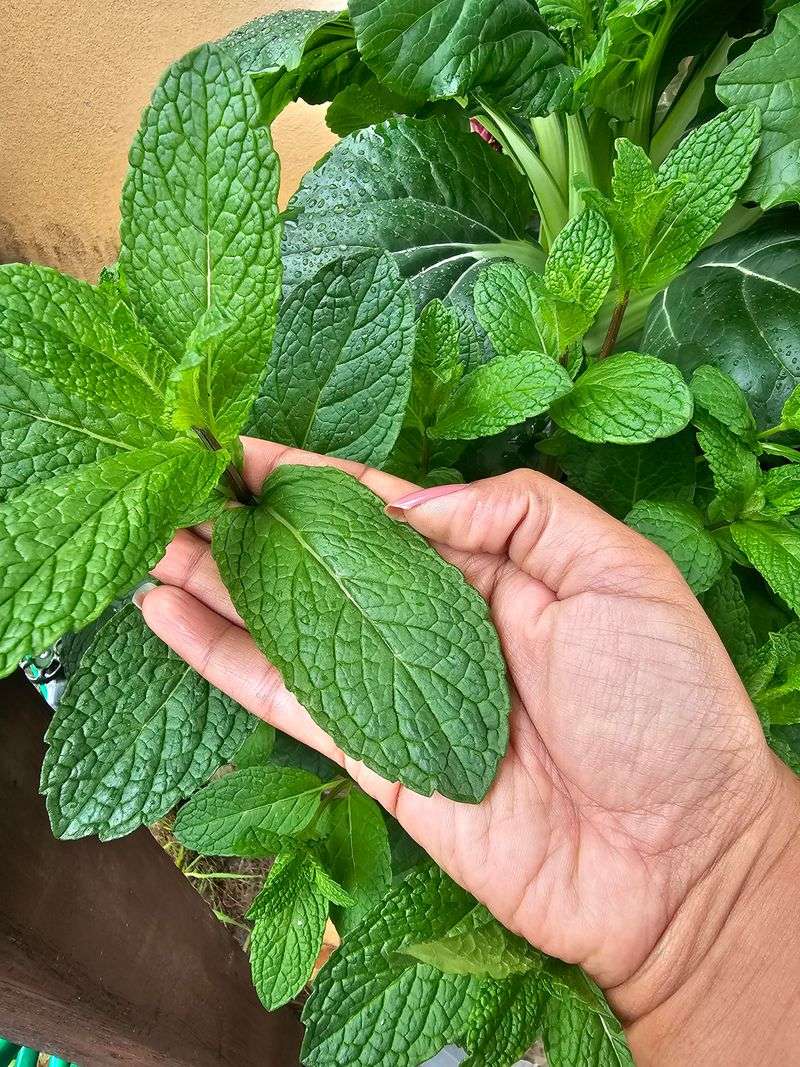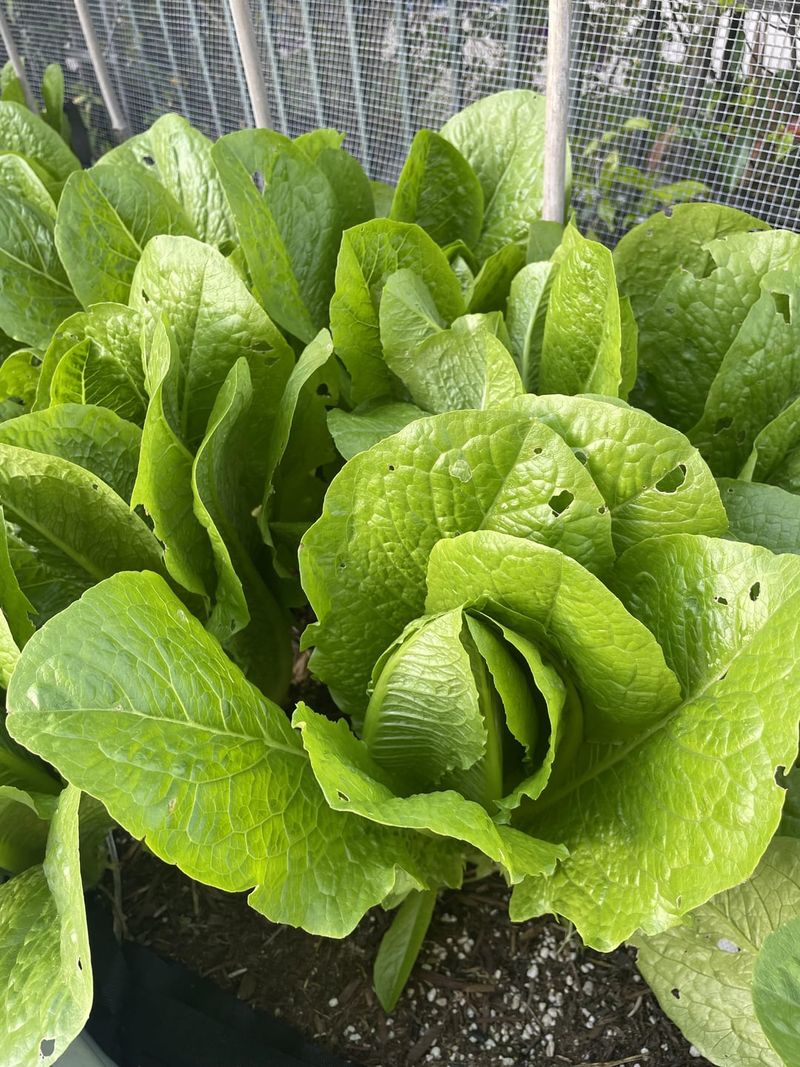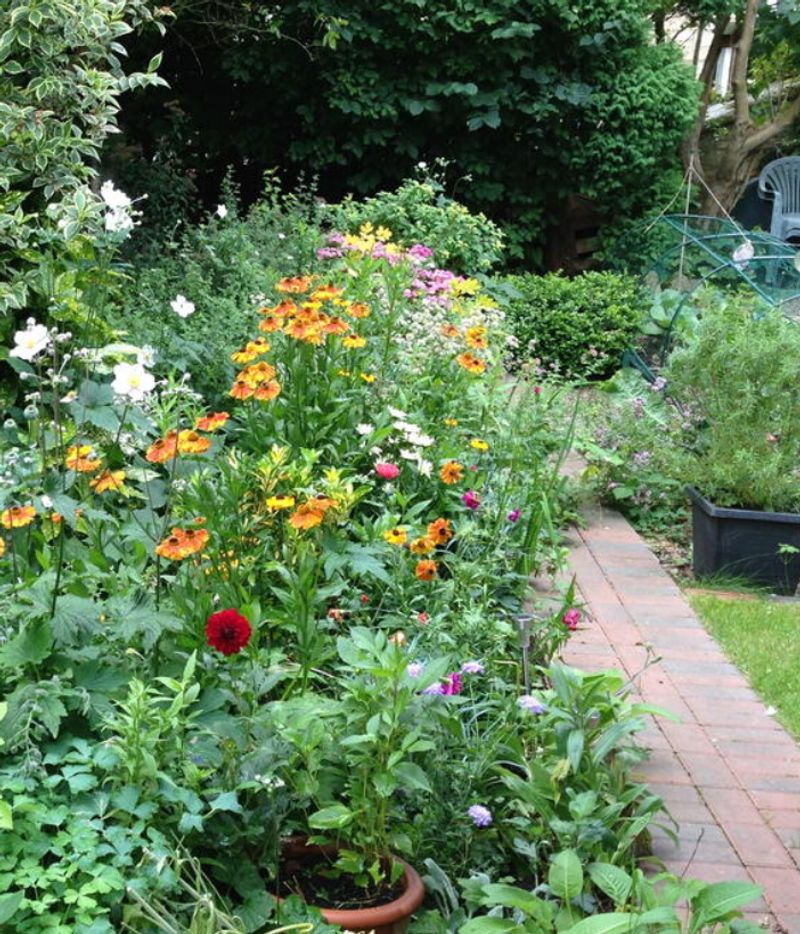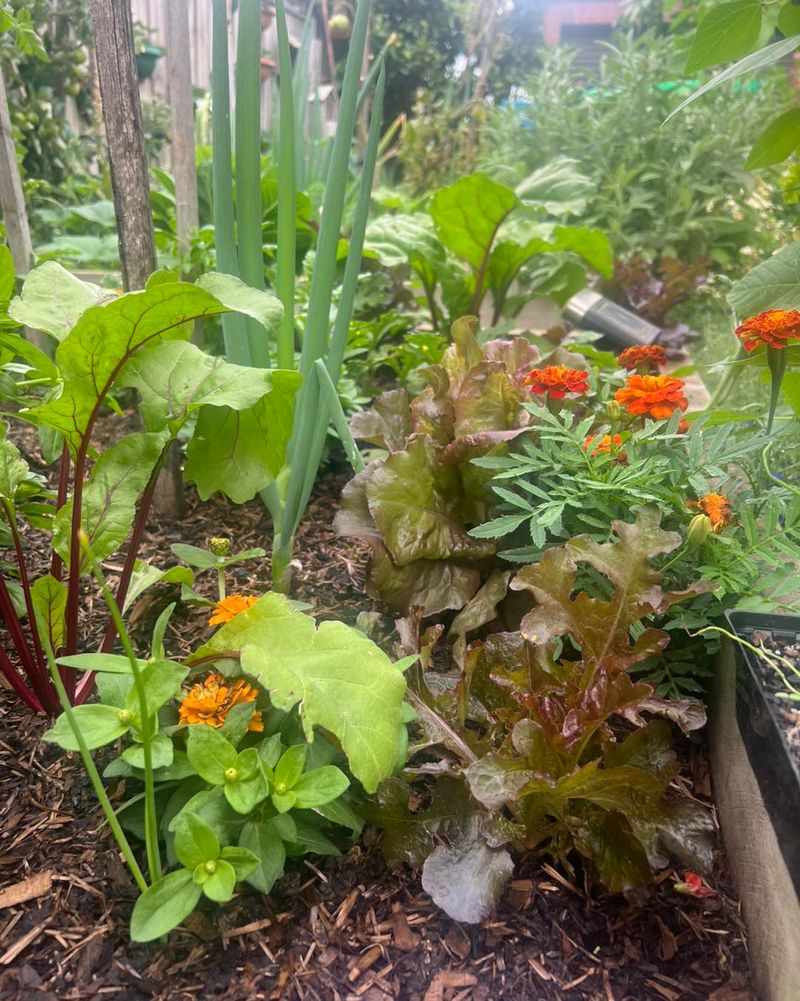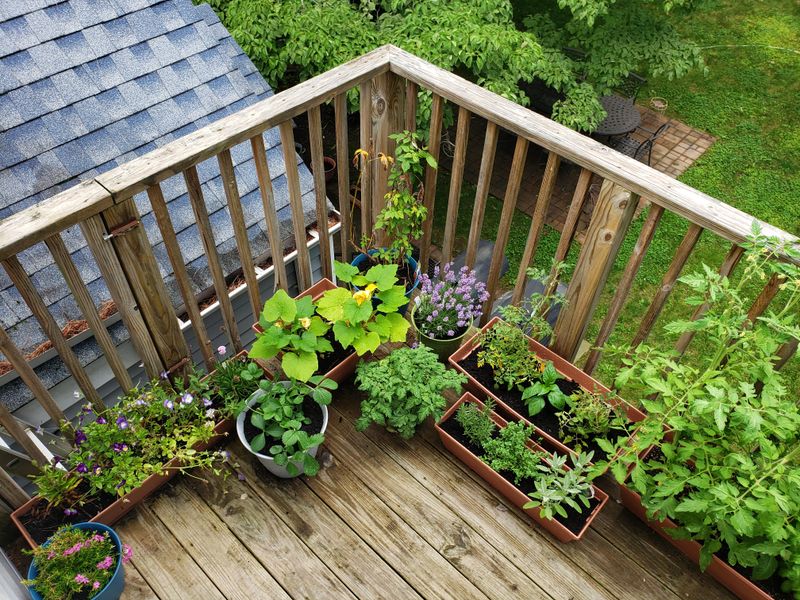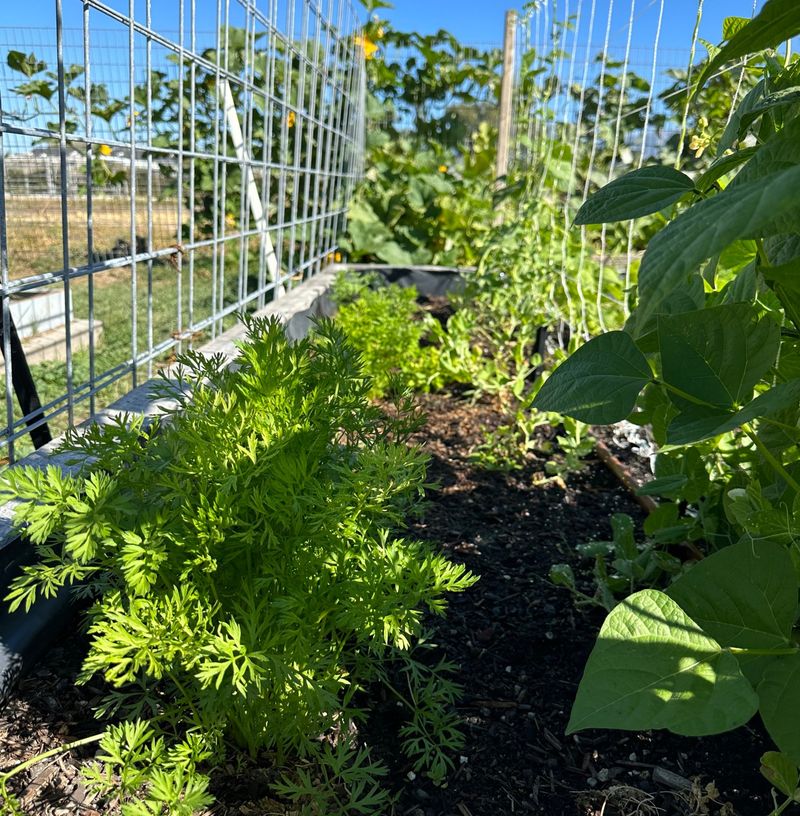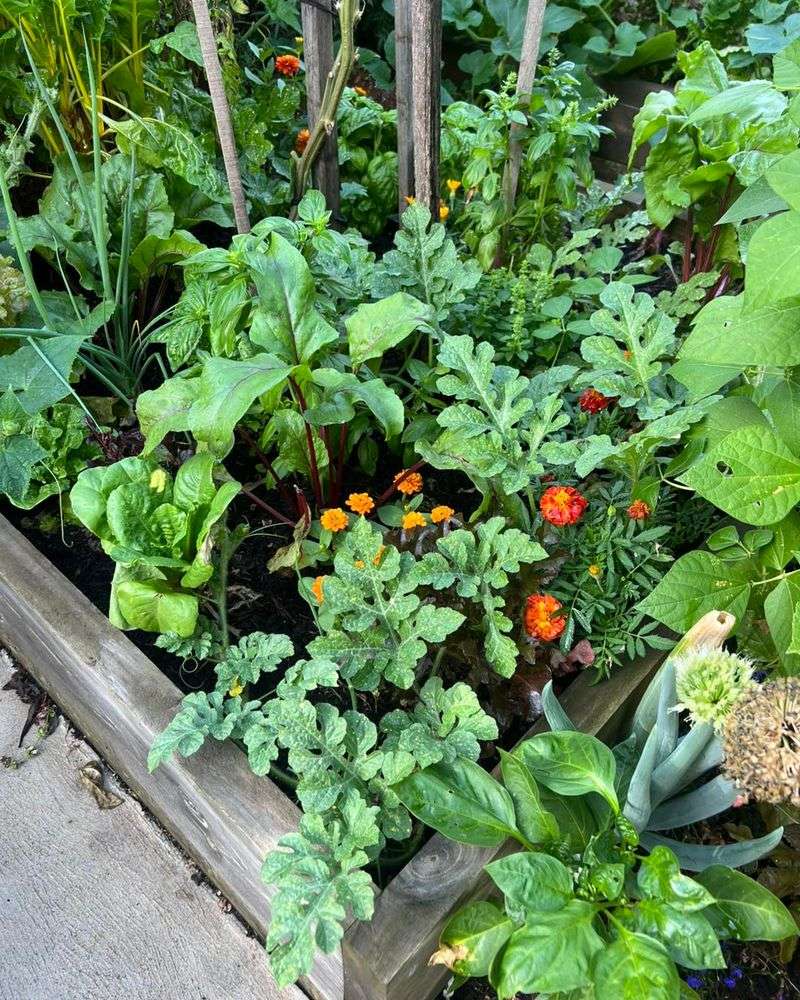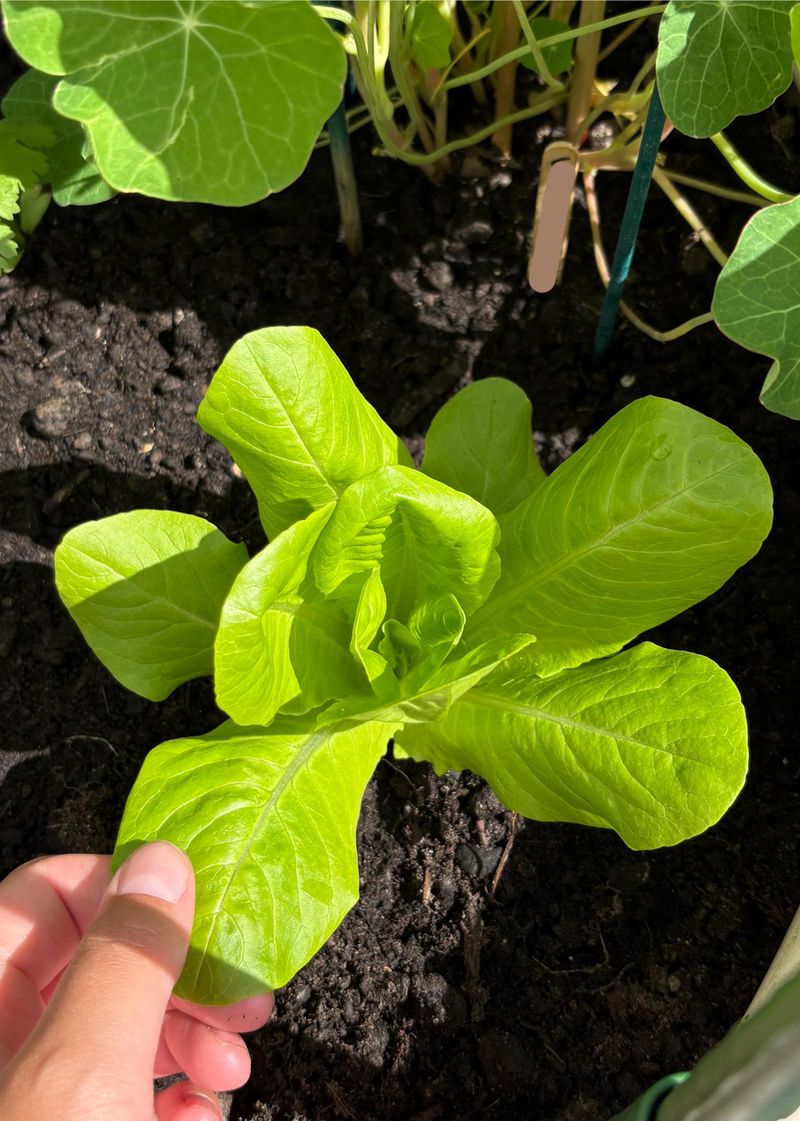It might sound like a salad mix gone wild, but planting lettuce and mint side by side is more than just garden whimsy. This oddball pairing is gaining traction among gardeners for its bug-repelling powers and soil-boosting benefits.
Whether you’re battling pests or just love a clever companion plant hack, here are 15 weirdly effective reasons to give this duo a try.
1. Repels Aphids Naturally
Mint releases powerful aromatic oils that aphids absolutely hate. These tiny green pests typically love feasting on tender lettuce leaves, leaving them riddled with holes and sticky residue.
By planting mint nearby, you create an invisible shield of scent that keeps aphids at bay. Gardeners report up to 70% fewer aphid problems when these plants grow together.
The natural pest control happens without any sprays or chemicals – just plants doing what they do best!
2. Deters Ants and Whiteflies
Garden ants farm aphids for their sweet secretions, creating a double trouble situation for lettuce. Meanwhile, whiteflies suck vital juices from leaves, weakening plants significantly.
Mint’s strong scent confuses these insects’ communication systems and masks the chemical trails ants follow. The menthol compounds in mint leaves act like a natural insect repellent that keeps working 24/7.
Many gardeners notice ants actively avoiding mint-protected areas of the garden!
3. Masks Lettuce Scent From Pests
Lettuce gives off subtle plant volatiles that actually attract certain pests like slugs and cabbage loopers. These chemical signals act like dinner bells for hungry critters looking for tender greens.
Mint’s stronger aromatic profile effectively drowns out lettuce’s scent signature. The camouflage effect confuses pests who rely on smell to locate their favorite foods.
It’s like hiding your lettuce in plain sight – the pests simply can’t detect what’s right under their noses!
4. Attracts Beneficial Insects
Mint flowers become buzzing hotspots for helpful garden allies. Tiny parasitic wasps, ladybugs, and hoverflies flock to mint blossoms for nectar, then stick around to hunt pest insects threatening your lettuce.
These beneficial insects act like a tiny garden army, consuming hundreds of aphids, caterpillars, and other problematic bugs daily. The mint essentially recruits free pest control services!
Plus, many of these helpful bugs improve pollination throughout your garden, boosting yields everywhere.
5. Improves Soil Health Over Time
Mint roots release compounds that stimulate beneficial soil microbes and fungi. These microscopic helpers break down organic matter faster, creating nutrient-rich soil that lettuce loves.
The diverse root structures work at different soil depths too. Mint’s spreading roots help prevent erosion and compaction, while lettuce’s shallower roots benefit from the improved soil structure.
Over several growing seasons, plots with mint-lettuce combinations show measurably higher organic matter and microbial activity than lettuce-only areas.
6. Provides Partial Shade for Lettuce
Lettuce hates intense summer heat and often bolts (goes to seed) when temperatures climb too high. The taller mint plants create dappled shade patterns that protect lettuce during the hottest part of the day.
This natural sun umbrella extends the growing season by weeks in many climates. The temperature under mint’s partial shade can be 5-8 degrees cooler than exposed areas.
Strategically planting mint on the south or west side of lettuce rows maximizes this cooling shade effect when it’s needed most.
7. Helps Retain Soil Moisture
Mint’s dense foliage creates a living mulch effect around lettuce plants. The leafy canopy reduces evaporation from soil surfaces and blocks drying winds that can quickly dehydrate shallow-rooted lettuce.
Morning dew collects on mint leaves, then drips down slowly to water the soil throughout the day. This natural irrigation system works especially well in raised beds and container gardens.
Gardeners find they can water up to 30% less frequently when growing these plants together compared to lettuce-only plots.
8. Reduces Need for Chemical Sprays
The natural pest-repelling properties of mint dramatically decrease the need for pesticides. Many gardeners find they can completely eliminate chemical controls when these plants partner up.
Less spraying means healthier soil microbes and more beneficial insects sticking around. The ecosystem becomes self-regulating over time.
Beyond pest control, mint’s antimicrobial properties can help suppress certain soil-borne diseases that typically affect lettuce, reducing the need for fungicidal treatments as well.
9. Minimizes Pest Damage Without Effort
Once established, this plant partnership creates passive protection requiring zero maintenance. Unlike traps, sprays, or barriers that need regular attention, mint continuously releases its protective compounds.
The defensive system works 24/7, even when you’re away on vacation. Rain actually enhances mint’s effectiveness by releasing more aromatic oils into the surrounding air.
Gardeners with busy schedules particularly appreciate this set-it-and-forget-it approach to pest management that keeps working season after season.
10. Boosts Pollination in Mixed Beds
Mint flowers are pollinator magnets, drawing in bees, butterflies, and other helpful insects. While lettuce doesn’t need pollinators (it’s self-pollinating), nearby vegetables and herbs definitely benefit from the increased pollinator traffic.
The elevated insect activity improves yields on everything from tomatoes to squash. Many gardeners report 20-30% better fruit set on nearby crops.
Even when mint isn’t blooming, its aromatic leaves help pollinators locate your garden from greater distances, making it a year-round pollination booster.
11. Enhances Companion Planting Diversity
Adding mint to lettuce beds creates a gateway effect for successful polyculture gardening. The protection mint provides allows you to introduce other companion plants that might otherwise struggle with pests.
Carrots, radishes, and strawberries all thrive in this arrangement. The diverse plant community creates multiple layers of defense against different pests and diseases.
Each new plant species introduces beneficial relationships that strengthen the entire garden ecosystem, making everything more resilient to stress and weather extremes.
12. Saves Space in Small Gardens
Vertical gardening gets easier when mint’s upright growth habit complements lettuce’s low, spreading form. This spatial efficiency makes the combination perfect for small gardens, balconies, and container gardens.
In just one square foot, you can grow both a salad base and a flavorful herb. The different root depths mean they’re not competing for the same soil resources.
Urban gardeners particularly value this space-saving duo that delivers two distinct harvests from the same limited growing area.
13. Adds Natural Fragrance to Garden Beds
Garden work becomes more enjoyable when surrounded by mint’s refreshing scent. The aromatic oils released when you brush against mint leaves or work the soil create an uplifting gardening experience.
Beyond the mood-boosting benefits for gardeners, the fragrance helps mask human scents that might otherwise alert pest animals like rabbits and deer to your lettuce patch. Many gardeners report fewer mammal visitors when mint is present.
The pleasant aroma even helps deter mosquitoes while you’re working in the garden!
14. Creates a Microclimate for Cool Crops
Lettuce belongs to the cool-season crop family that struggles in summer heat. Mint’s dense growth creates a protective microclimate by increasing humidity and reducing temperature fluctuations around lettuce plants.
This natural air conditioning effect can extend lettuce harvests by 2-3 weeks into warmer weather. The mint essentially tricks lettuce into thinking it’s still spring.
Morning dew collects more readily in these microclimates, providing additional moisture that helps prevent lettuce from turning bitter during warm spells.
15. Easy to Harvest Together for Fresh Meals
Talk about convenience! With one quick garden visit, you can gather the main ingredients for an instantly elevated salad. The mint adds unexpected flavor notes that transform ordinary lettuce into something special.
Children especially enjoy harvesting this tasty combination. The sensory experience of picking fragrant mint leaves alongside crisp lettuce makes them more likely to eat what they’ve grown.
The plants’ different harvest times actually complement each other – mint stays productive even after lettuce is finished, giving you continuous returns from the same garden space.

